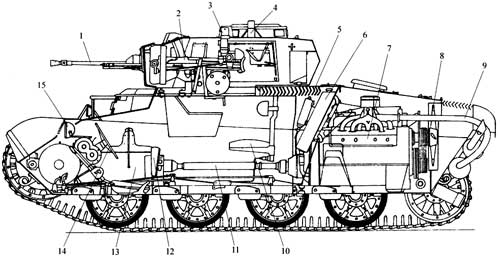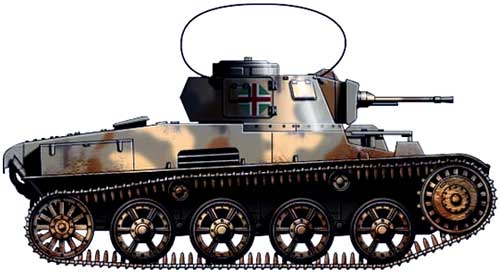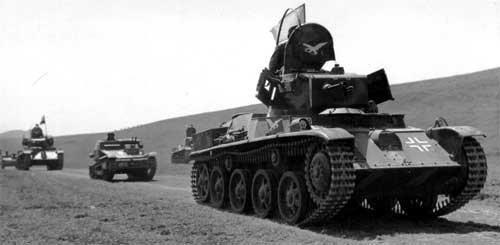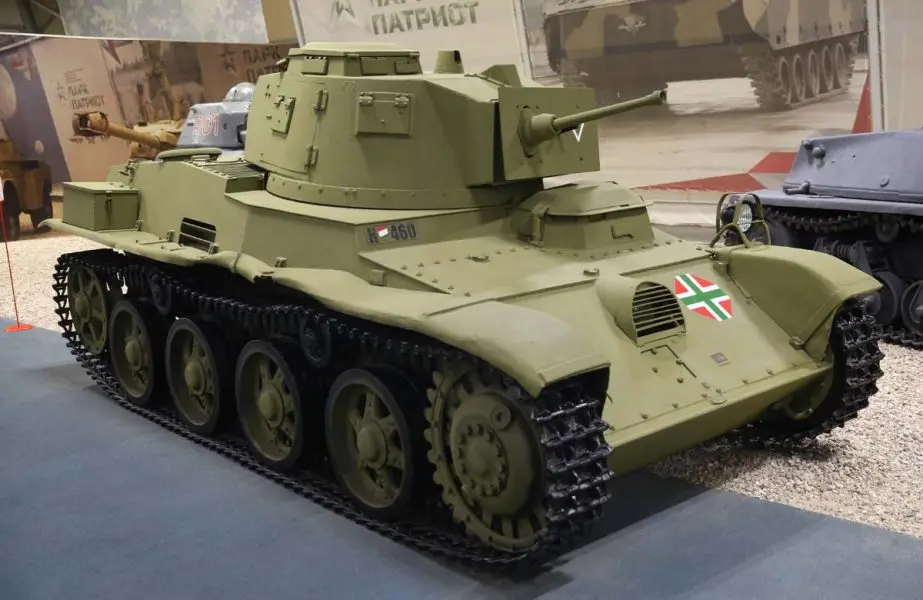
Hungarian light tank 38.M “Toldi” I
Hungarian light tank 38.M “Toldi” I
In 1934, at the plant of the Swedish company Landsverk AV, in Landskron, the L60 light tank (another designation Strv m / ZZ) was created and put into production. The development of this machine was carried out by the German designer Otto Merker, who was then working in Sweden - because, as mentioned above, Germany was forbidden by the terms of the Versailles Treaty of 1919 to have and even design models of armored vehicles. Prior to that, under the leadership of the same Merker, the Landsverk AV designers created several samples of light tanks, which, however, did not go into production. The most successful of them was the L100 tank (1934), which widely used automotive components: engine, gearbox, etc. The car had a number of innovations:
Swedish light tank L-60 It was a typical, very good reconnaissance tank. However, the Swedes decided, using the proven design solutions, to create a heavier “universal” tank, that's why the L100 didn't go into production. It was produced in single copies in three slightly different modifications in 1934-35. Several machines of the latest modification were delivered to Norway. They had a mass of 4,5 tons, a crew of 2 people, were armed with a 20 mm automatic cannon or two machine guns, and had 9 mm armor on all sides. This L100 served as the prototype of the mentioned L60, the production of which in five modifications (including Strv m / 38, m / 39, m / 40), continued until 1942. The layout of the tank "Toldi" I:
Click on the picture to enlarge Initially, the mass of the L60 was 7,6 tons, and the armament consisted of a 20 mm automatic cannon and a machine gun in the turret. The most successful (and largest in number) modification was m/40 (L60D). These tanks had a mass of 11 tons, a crew of 3 people, armament - a 37-mm cannon and two machine guns. 145 hp engine allowed to reach speeds up to 45 km / h (power reserve 200 km). The L60 was a truly remarkable design. Its rollers had an individual torsion bar suspension (for the first time in serial tank building). Frontal and turret armor up to 24 mm thick on the latest modification was installed with a slope. The fighting compartment was well ventilated. In total, few of them were produced and almost exclusively for their army (216 units). Two cars as samples were sold to Ireland (Eire - that was the name of Ireland in 1937-1949), one - to Austria. L60 tanks were in service with the Swedish army until the mid-50s; in 1943 they underwent modernization in terms of armament.
In March 1938, the Landsverk AV company was ordered one copy of the L60B tank (aka m / 38 or tank of the third series). It soon arrived in Hungary and underwent comparative trials (June 23-28) along with the German WWII TI light tank. The Swedish tank demonstrated significantly better combat and technical characteristics. He was taken as a model for a Hungarian-made tank, called 38. M "Toldi" in honor of the famous warrior Toldi Miklos, a man of tall stature and great physical strength. The commission that conducted the tests recommended a number of changes to the design of the tank. The Institute of Military Technology (IWT) sent its specialist S. Bartholomeides to Ladskrona to find out the possibility of making these changes. The Swedes have confirmed the possibility of modification, excluding changes in the steering devices of the tank and the brake (stopper) of the tower.
After that, discussions began in Hungary regarding the Toldi weapons system. The Swedish prototype was armed with a 20mm Madsen automatic cannon. Hungarian designers proposed to install 25-mm automatic guns "Bofors" or "Gebauer" (the latter - Hungarian development) or even 37-mm and 40-mm guns. The last two required too much alteration in the tower. They refused to buy a license for the production of Madsen guns due to its high cost. The production of 20-mm guns could be taken over by the Danuvia plant (Budapest), but with a very long delivery time. And finally it was accepted decision to arm the tank with a 20mm self-loading anti-tank gun Swiss company "Solothurn", produced in Hungary under license under the brand name 36.M. Feeding the gun from a five-round magazine. The practical rate of fire was 15-20 rounds per minute. The armament was supplemented by an 8-mm machine gun of the 34./37.M brand with belt feed. It was licensed czech machine gun. The performance characteristics of the Hungarian tanks of the second world war Toldi-1
Toldi-2
Turan-1
Turan-2
Zrinyi-2
The hull and chassis of the tank are practically the same as those of the Swedish prototype. Only the drive wheel was slightly changed. The engine for Toldi was supplied from Germany, however, as well as optical instruments. The tower underwent minor changes, in particular, hatches in the sides and viewing slots, as well as a gun and machine gun mantlet.
The commander was located in the tower on the right and a commander's cupola with a hatch and seven viewing slots with triplexes was equipped for him. The shooter sat on the left and had a periscope observation device. The driver was located on the left in the bow of the hull and his workplace was equipped with a kind of hood with two viewing slots. The tank had a five-speed planetary gearbox, a dry friction main clutch and side clutches. The tracks were 285 mm wide. When the leadership of the General Staff turned to the Ganz and MAVAG factories, disagreements arose primarily because of the cost of each tank. Even having received an order on December 28, 1938, the factories refused it because of the low price charged. A meeting of the military and directors of factories was assembled. Finally, the parties came to an agreement, and the final order for 80 tanks, divided equally among the plants, was issued in February 1939. The Ganz factory quickly produced a prototype of mild steel according to the drawings received from IWT. The first two production tanks left the plant on April 13, 1940, and the last of the 80 tanks on March 14, 1941.
Hungarian 38M Toldi tanks and CV-3/35 tankettes Sources:
| |||||||||||||||||||||||||||||||||||||||||||||||||||||||||||||||||||||||||||||||||||||||||||||||||||||||||||||||||||||||||||||||||||||||||||||||||||||||||||||||||||||||||||||||||||||||||||||||||||||||||||||||||||||||||||||||||||||||||||||||||||||||||||||||||||||||||||||
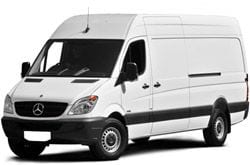
 According to the provisions of the Trianon Peace Treaty of 1919, Hungary, like Germany, was forbidden to have armored vehicles. But in the spring of 1920, 12 LKII tanks - Leichte Kampfwagen LK-II - were secretly taken from Germany to Hungary. The control commissions never found them.. And in 1928, the Hungarians openly bought two English tankettes "Carden-Loyd" Mk VI, after 3 years - five Italian light tanks "Fiat-3000B" (Hungarian designation 35.M), and after another 3 years - 121 Italian tankettes CV3 / 35 (37. M), replacing the Italian machine guns with 8-mm Hungarian ones. From 1938 to 1940, designer N. Straussler worked on a V4 amphibious wheeled-tracked tank with a combat weight of 11 tons, but the hopes placed on the tank did not materialize.
According to the provisions of the Trianon Peace Treaty of 1919, Hungary, like Germany, was forbidden to have armored vehicles. But in the spring of 1920, 12 LKII tanks - Leichte Kampfwagen LK-II - were secretly taken from Germany to Hungary. The control commissions never found them.. And in 1928, the Hungarians openly bought two English tankettes "Carden-Loyd" Mk VI, after 3 years - five Italian light tanks "Fiat-3000B" (Hungarian designation 35.M), and after another 3 years - 121 Italian tankettes CV3 / 35 (37. M), replacing the Italian machine guns with 8-mm Hungarian ones. From 1938 to 1940, designer N. Straussler worked on a V4 amphibious wheeled-tracked tank with a combat weight of 11 tons, but the hopes placed on the tank did not materialize.
